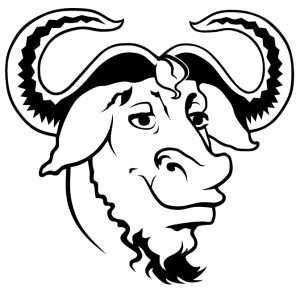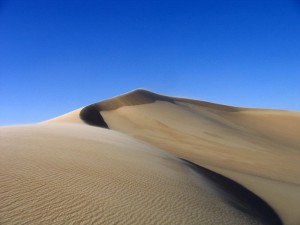Claming Open visualization
Missing freesoftware environment in visualization world
I come from freesoftware movement and way-of-using-technology, and from it I passed by freeculture (including free licenses in music and video), freeresearch (since I’m an opensaccess PhD candidate in UAB and UB universities). Nowadays, the free or open prefixes have a new fastly popularized new member: opendata.
Mainly I work in the data visualization field, ussualy trying to create new or semi-new visualization tools. Obviously I use free software as software for the created tools. Like I use to do with any other software, I publish the code (github) and the data it uses to be published in the place where the concrete project is hosted.
Since visualization involves multiple fields of knowledge and it attracts multiple human scopes, I miss an standarized way to publish code + data as a visualization open resource. In this entry I propose a way to do that and also I give a first draft for what I understand for “open visuaization”.
Interaction or SaaS is not enough
Interactive visualizations allows you to use a software, usually, to navigate the data. This looks like more free that an static-image visualizations. In my opinion this is not enough. An interactive visualization for sure is giving the viewer more power to discover using the data or to simply understand the data. If you wanna go further, improving the tool itself, adding data or reusing the tool, you will need more access to the code & data.
For the same reasons,SaaS is not a solution for openknwoledge mission. SaaS is giving the easiest way to use the tool, usually with a browser. But is not making possible to improve, reproduce or experiment with the tool, a web app.
Open visualization or free visualization?
I understand open as a concept included in free as it is in freesoftware. Data, pure data, don’t really needs all the freedom conditions defined for software code. I’d like to use freedata instead of opendata, but I can accept opendata as the standard.
Talking about visualization, where code and data have the same weight, open probably is the conceptual limiting and freevisualization maybe induce to give more importantce to the code. A google search for free visualization gives you mainly free and non-free software lists and sites.

open visalization?
Conditions for openvisualization:
In order to be able to reproduce a visualization, to copy it, to improve it, to redistributed, to reuse it in other data contexts,…an open visualization work needs to acomplish some conditions:
- Code conditions: similar to the freesoftware GPL licenses. According to the 4 degrees of freedom:
– The freedom to run the program, for any purpose (freedom 0).
– The freedom to study how the program works, and change it so it does your computing as you wish (freedom 1). Access to the source code is a precondition for this.
– The freedom to redistribute copies so you can help your neighbor (freedom 2).
– The freedom to distribute copies of your modified versions to others (freedom 3). By doing this you can give the whole community a chance to benefit from your changes. Access to the source code is a precondition for this.
- Data conditions. since there are no commonly agreed definitions for open data, the openaccess SPARK definition can give us a first approach:
By Open Access, we mean the free, immediate, availability on the public Internet of those works which scholars give to the world without expectation of payment – permitting any user to read, download, copy, distribute, print, search or link to the full text of these articles, crawl them for indexing, pass them as data to software or use them for any other lawful purpose
From OKFN Open definition we have:
“A piece of content or data is open if anyone is free to use, reuse, and redistribute it — subject only, at most, to the requirement to attribute and/or share-alike.”(*)
Conditions list:
- Data must be in open formats
- License must allow the edition of the data
- License must allow to publish copies of the data
- License must allow to republish the modifications of the data in the same or new formats
-
…
- Visualization conditions
- The published work must be appropriately documented to ensure that the work is reproducible.
- The reproduction must be possible at least in a freesoftware OS & apps context.
- People should be able to calculate or study the quality of the visualization (data quality, data massage & stats quality, representation accuracy, adjustements).
- It will be appreciated to attach a context overview of the project itself. An explanation and goals of the project or work.
What do I expect in an openvisualization environment?
I expect people who cares for the knowledge you can find in a visualization work. More people using and thinking same tool, improves the tool, specially when a visualization is open. I expect to have associated to the title of a visualization, a note about whether the visualization is open or not. I’m not a fun of the institutional hackatons, but I recognize that an only openvisualizations hackaton or contest will attract me a lot more and will produce open reusable ideas. Specially in a crazy coding spring, typical in hackatons, most of produced works can be more quietly extended improving and reusing them.
I see a lot of new startup companies in the visualization and data market. Lot of them era not publishing any code. What they produce is almost secret. Some people of these companies use to attend visualization events and some are part of the communities. This people interchange ideas with others and rarely talks about their commercial secrets. If you wanna see your ideas comercialized after talking with those guys, is ok, this is up to you.In general they learn from a big group of people and produce for an small group of custumers.
I see some of those companies in opendata events, specially hype opengov ones, where use to be more money. IMHO an opendata event must accept only openvisualization proposals. This is the way , the event or the institution or organization involve in the event, can assure knowledge outputs of the event, and possible future developments.
In an openvisualization community you would be able to share knowledge, insights and criticism with all kinds of professionals, and produce never-ending ideas.
Related post:
-
#Opendata: notes on the way to (I): Opendata world is here!
(July 2011)
-
#Opendata: notes on the way to (II): Opendata and free software(September 2011)


